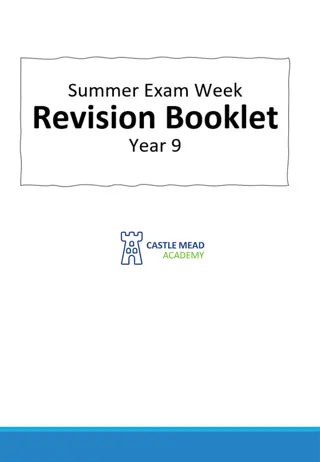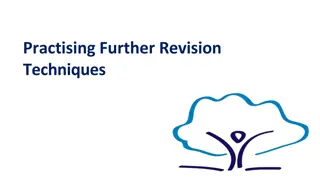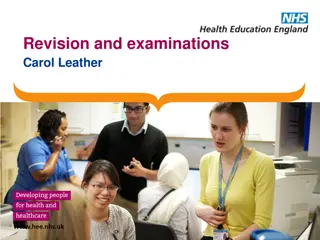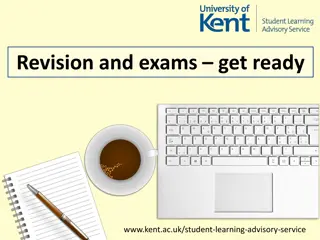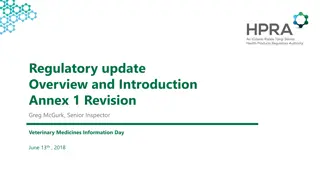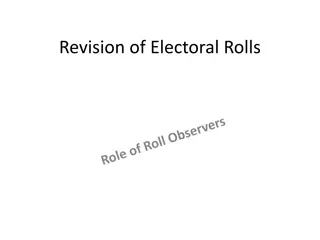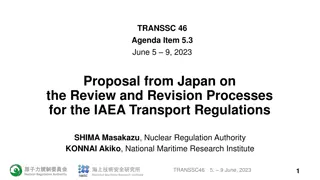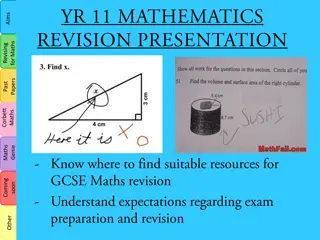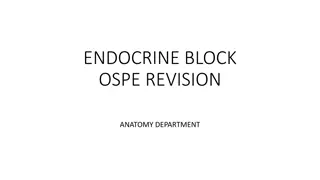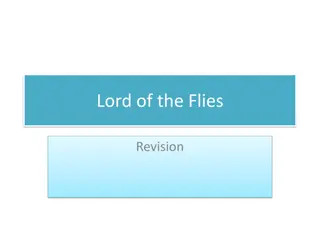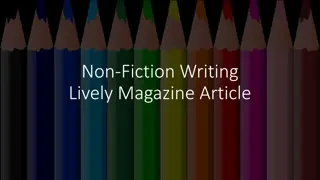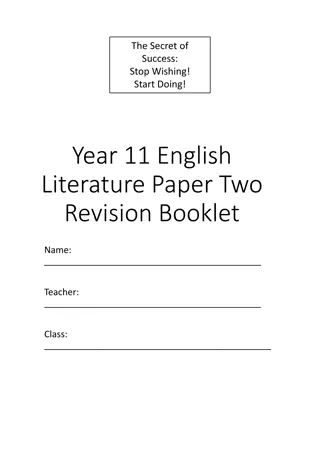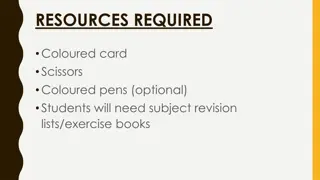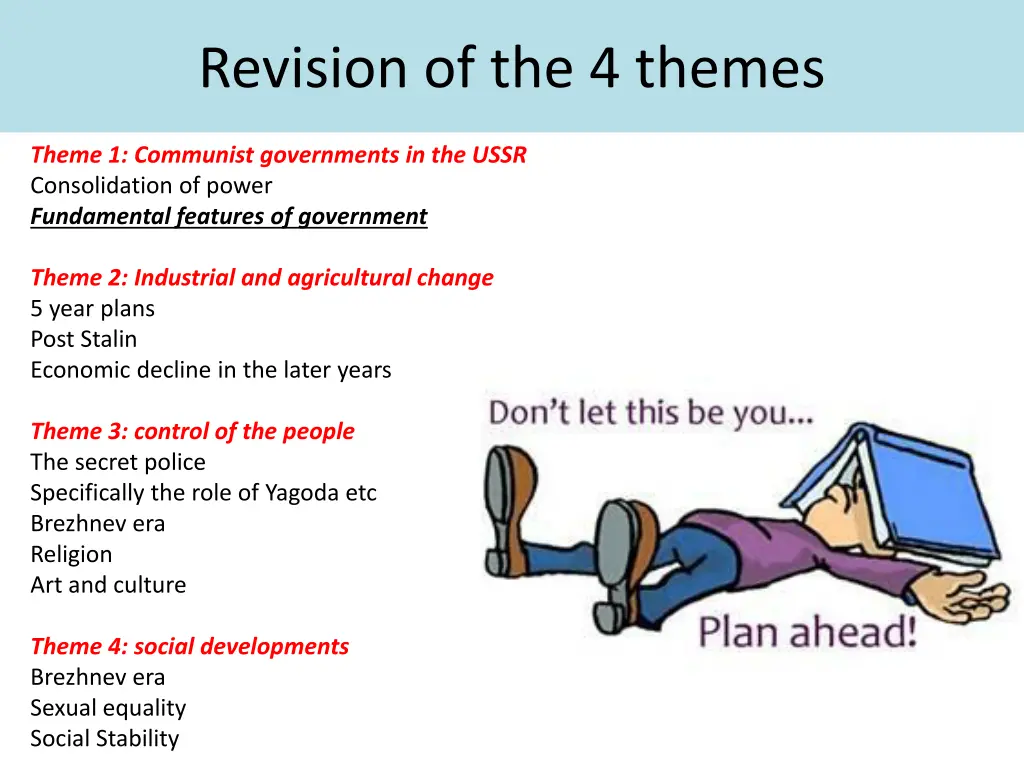
Key Themes in Soviet History: Consolidation of Power, Economic Changes, Control of the People, Social Developments
Explore the consolidation of power by communist governments in the USSR, industrial and agricultural transformations, the role of secret police like Yagoda, and social developments under the Brezhnev era. Discover how Lenin and Stalin shaped the fundamental features of government, economic decline post-Stalin, and the pursuit of social equality amidst political turmoil.
Download Presentation

Please find below an Image/Link to download the presentation.
The content on the website is provided AS IS for your information and personal use only. It may not be sold, licensed, or shared on other websites without obtaining consent from the author. If you encounter any issues during the download, it is possible that the publisher has removed the file from their server.
You are allowed to download the files provided on this website for personal or commercial use, subject to the condition that they are used lawfully. All files are the property of their respective owners.
The content on the website is provided AS IS for your information and personal use only. It may not be sold, licensed, or shared on other websites without obtaining consent from the author.
E N D
Presentation Transcript
Revision of the 4 themes Theme 1: Communist governments in the USSR Consolidation of power Fundamental features of government Theme 2: Industrial and agricultural change 5 year plans Post Stalin Economic decline in the later years Theme 3: control of the people The secret police Specifically the role of Yagoda etc Brezhnev era Religion Art and culture Theme 4: social developments Brezhnev era Sexual equality Social Stability
Consolidation of Power by Lenin Replay the game but ideally with the correct answers what other details can you now add? In November 1917, the Bolsheviks passed the Workers Control Decree . Factory committees were given the right to control production and to the right of self-determination to the national and so accepted the terms of Brest-Litovsk in The Rights of the People of Russia decree gave Lenin adopted a position of peace at any price Lenin had no intention of seriously including other parties. He was not prepared to see his vision diluted by other socialist parties. In October 1917, the Sovnarkom passed the decree on land . This gave peasants the right to take over the estates of the gentry, without compensation, and to supervise management. Russia pulled out of World War I. But the The Kadet party was outlawed. Leading Kadets were arrested and two were brutally put to death by Bolshevik sailors. So, he deliberately made sure that talks with other socialist parties collapsed. He wanted the Bolsheviks to rule alone. decide for themselves the best way to divide it up. In October 1917, the Bolsheviks also agreed to a Of course, the Bolsheviks did not have control of consequences of the treaty caused deep discontent amongst those who saw it as a Instead of exercising power through the Soviet, Lenin formed a new body: the SOVNARKOM. It was exclusively made up of Bolsheviks. Lenin decided that he could not allow opposition press to continue to be published. They were soon followed into prison by leading right-wing Socialist Revolutionaries and Mensheviks all this before the end of 1917. Revolutionaries and brought them in as junior partners in the Sovnarkom. belonged to the entire people . Privately owned land was not part of the Bolshevik s socialist vision. social insurance (unemployment and sickness benefits). shameful peace. Also he feared that he may be sidelined in a coalition government. minorities in the former Russian Empire. March 1918. Lenin allowed the elections to the Constituent Assembly to go ahead in November 1917. However, the Bolsheviks won only 175 seats against 410 for the Socialist Revolutionaries. It was banned in October 1917, firstly the newspapers of the centre and right, and later the socialist press. At this stage, however, other socialist parties were not banned outright although their future was very uncertain. He saw this as useful because, with them on board, he could claim to represent the interests of the peasantry However, he did make an alliance with the left Socialist Lenin declared that his form of government represented a higher stage of democracy than an elected assembly. Land could no longer be bought, sold or rented, it maximum eight-hour day for workers as well as the areas in which most of the people lived, so this was nothing more than a paper measure . The Assembly was allowed to meet for one day 5 January 1918 then it was closed down and the deputies told to go home.
Fundamental features of Government What are the fundamental features of Lenin s government To what extent did they remain under Stalin? The elimination of opponents of Bolshevik power, including the Constituent Assembly and the Kronstadt mutineers Stalin s persecution of his opponents Lenin s Red Terror and the attacks on the bourgeoisie Stalin s campaign against the kulaks and the Purges of the 1930s Centralisation of state power during and after the civil war Stalin sdictatorial regime Officially approved attacks on religious beliefs and practices By both A pragmatic approach to the economy demonstrated in the switch from War Communism to the New Economic Policy Stalin s changing economic priorities during the Great Patriotic War Control of mass media and, including the appeal by both leaders to Russian nationalism during wartime. Used by both
Differences 1. Lenin was prepared to allow some debate and different viewpoints within the CPSU, while Stalin reduced the Party to a cipher which automatically approved Stalinist policies; Stalin destroyed his political opponents in the Purges of the 1930s 2. Lenin s readiness to ignore communist ideology in the quest to remain in power, but the ideological inflexibility of Stalinism as an instrument of government 3. Lenin s reluctance to develop a personality cult but the pervasive nature of the Stalin personality cult.
Political Stagnation (Theme 1) By 1980 it was hard to change the political system that had been created under Stalin. Under Brezhnev the soviet leadership had become an oligarchy, with the general secretary at the top. This was done by promoting quickly through the ranks, it meant that new officials had no new ideas and limited experience. Corruption also went unnoticed figured were faked and nepotism was rife. The leadership was becoming a gerentocracy run by old people. Andropov saw the need for reform and wanted to get rid of corruption within the party he was too sick to achieve this.
What was War Communism? The Bolsheviks took control of factories, mines, workshops and railways. Workers were forced to work in factories. Grain was taken from the peasants using force. The Bolsheviks took control of the banks. Private trade was not allowed. Food was rationed The Red Army needed to be supplied with food and weapons to help it fight the Civil War against the Whites. The Bolsheviks were Communists. They wanted to take control of industry and food production in Russia.
Why did War Communism fail? Grain hidden Peasants hid grain. Many peasants were arrested or shot. Fall in food production Peasants grew less grain. This led to a famine in 1921. Food shortages and famine There were food shortages in towns. Fall in factory production The number of goods produced by factories did not increase as a result of War Communism. Kronstadt Rebellion The sailors at the Kronstadt naval base revolted against the Bolshevik government in 1921. They wanted an end to War communism.
NEP Why was it needed? What measures were introduced?
NEP Why was it needed? to retain political power economic retreat designed to stop political defeat to revive the economy needed to stimulate grain production to end famine to build socialism by 1921 it was clear a European revolution would not happen, therefore he needed to be able to build socialism without foreign aid.
Below are five statements about the policy of War Communism. Decide whether the statements are true or false War Communism allowed private trade. True False War Communism meant that food was rationed. True False Food production increased due to War Communism. True False War Communism was introduced to help the White armies win the Civil War. True False Grain was taken from peasants using force. True False
Lenin allowed freedom to national and Muslim cultures. In the Ukraine, although the Bolsheviks were in power, the Ukrainian language was used in government and business, and children were taught it in schools. In the Muslim areas of central Asia (such as Uzbekistan and Turkmenistan) bazaars were allowed to reopen, mosques were taken from Soviet control, the Koran was restored, and native languages were encouraged. National freedoms Coal, iron, steel and railways stayed nationalised, but the Bolsheviks brought in experts, on high wages, to increase production Experts Small factories were handed back to their owners. New traders (called 'nepmen') were allowed to set up small private businesses. At the same time - where War Communism had forced the peasants to hand over ALL their surplus grain - Lenin let them sell their surplus, and pay a tax instead. Some hard-working peasants became rich (the Kulaks ) Private enterprise
5 Year plans and collectivisation Plan Aims Successes Failures Collectivisation 1928 - 1941 First 5 year plan 1928-1932 Second 5 year plan 1933-38 Third 5 year plan 1938-1941 You have 10 minutes fill in as much as possible from memory.
Plan Aims Successes Failures Collectivisation 1928 - 1941 First 5 year plan 1928-1932 Second 5 year plan 1933-38 Third 5 year plan 1938-1941
c To merge small farms into large, mechanised ones greater efficiency. To solve the grain procurement crisis Get rid of Kulaks who Stalin believed were hiding grain More grain was exported to raise money for industry (also led to famine) By 1932, 75,000 tractors had been supplied. Government procured much more grain. Chaos in the first year temporarily stopped back by 1931 to 1941. Peasants destroyed crops, animals and machinery. Grain production decreased Famine 1932 and 1933 5 million died 75,000 tractors provided had limited impact 1 To close the 100 year gap Russia had in terms of industry Focus on heavy industry coal, oil, iron and steel. Russia s economy grew by 14% each year. Output exceeded that of NEP Social mobility migration to urban areas, promotions given to skilled workers Gov t invested in technical education. Production increased but targets were rarely met Quantity rather than quality Living standards 7 day working week Much achieved through the use of slave labour. Black market 2 Focus on transport, new industries and labour productivity 1936 priorities changed to rearmament Moscow metro opened in 1935 Bread rationing ended in 1934 Stakhanovite movement Heavy industry more than doubled New houses lacked basic sanitation Many still had a poor diet Inequalities between senior communists and general pop Problems of the first continued into the second. 3 Focus on rearmament and heavy industry Total investment in rearmament doubled between 1938 &1940 In 1939, 9 new aircraft factories created Coal production jumped 128 M tonnes to 166 M tonnes from 1937-40 Internal passports were introduced to stop workers travelling around Russia. Stalin s purges removed most experienced economic planners Gosplan was never able to publish a plan and so execution of it was chaotic Purges of industrial managers led to stagnation of steel production Food rationing was introduced Impossible to buy consumer goods
Industry and agriculture post 1953 Khruschev The virgin land scheme The Corn campaign Industrial modernisation The 7 year plan Andropov/ Chrenenko Impact of oil prices Brezhnev Kosygin reforms Developed socialism The 9th 5 year plan Agriculture
Agriculture under Khrushchev Investment 1953-64 Khrushchev reduced the quota and introduced higher prices this led to a 250% rise in income 1952-56 He invested in equipment and fertiliser. Virgin land scheme hoped to increase production by farming previously unfarmed lands. Increased investment put in from 3% each year to 12.8%. Corn campaign September 1958, shift farms in Ukraine from growing wheat to Maize. It would be used to feed animals and therefore increase the amount of meat available Success Initially a success meat, milk and grain production all rose 35.3 % between 1953-58 Greater availability of food therefore better standard of living 400% rise in income of farm workers Problems Agriculture remained extremely inefficient Virgin land scheme was expensive Kazakhstan is naturally dry and so need an intricate irrigation system. Harvests reduced by 1959/60 Machine and tractor stations abolished Campaigns ineffective for local conditions Repeatedly reformed ministries Inadequate storage on farms Cut investment to 2% by 1959
Economic stagnation and decline You need to copy out the following titles and put the information under the correct one. 1. The legacy of the Stalinist system 2. Problems inherent in a command economy 3. The Social contract 4. Lack of investment 5. Outdated technology 6. The dominance of the military-industrial complex
The 5 year plans had been geared towards industry and recovery post ww2. the move towards efficiency and quality was hard to achieve in the highly centralised system. Bureaucrats who had blossomed during the period of rapid industrialisation were resistant to change Central control did not encourage initiative and creativity. experimentation at a local level was seen as a threat to the power of central planning. under Brezhnev, the leadership preferred to keep Party officials happy rather than encourage growth. The use of government set prices and cost made spotting or solving inefficiencies difficult. Production of everything from coal to shoes was decided by central planners who could not cope with changes in circumstances or trends. This soaked up at least 18% of soviet resources and employed 30 million people out of a working population of 150 million. Brezhnev s foreign policy involved increasing intervention in the developing world and this made expenditure on arms and defence necessary. These resources could have been switched, at least in part to consumer goods and agriculture. investment in agriculture increased during the Khrushchev and Brezhnev years but it still wasn't enough to address the chronic underfunding it had received under Stalin Soviet successes had been in areas that were now outdated. Production of steal, cement, oil and pig iron exceeded that of the USA in the 1970 s. By the 1980 s the USSR was struggling to keep up to date with technological advancements made in the west. Brezhnev s policy of coupling industries with scientific research institutions helped but it could not solve the issue. In the 80 s the USSR signed deals with the west, for example Fiat and Renault to import car making technology. There was an unstated but understood contract that the government would provide employment and reasonable standards of living in return for workers compliance. this meant the government were unwilling to use the ultimate sanction of economic failure and unemployment. therefore workers were doing very little real production.
Economic decline ( Theme 2) Economic growth had pretty much stopped by the 1980 s. The fixation on output masked problems with economic performance quality was sacrificed in a push for quantity, many were so poor that they were just left to rot. This also hid poor levels of productivity. Reasons for decline: Legacy of the Stalinist system Problems inherent in a command economy The social contract Lack of investment Outdated technology The dominance of the military-industrial complex
How far did the Russian economy improve in the years 1921-64? How far do you agree that the introduction of the NEP in 1921 was the main turning point in communist economic policy in the years 1917-53? How far do you agree that the Benefits of Stalin s economic policies outweighed the costs in the years 1928-50? To what extent did the aims of the communist economic policy change in the years 1917- 53? How accurate is it to say that Stalin s policies thoroughly modernised the Soviet economy in the years 1928-1953? How far do you agree that the Communist government faced severe economic and political challenges in the years 1917-28? How far do you agree that the Soviet economy was transformed in the years 1929-53? How successful were economic policies in promoting economic development in the USSR in the years 1917-41? How far was Soviet economic decline in the period 1964-85 a result of failure of leadership? How far did the economic priorities of the Russian Government change in the period 1928- 1964? (Hodder, p.68). How successfully did Soviet economic policy meet its aims in the years 1928-1985? (Hodder, p.69) How far was Brezhnev responsible for the economic decline of the USSR in the years 1964 85? (Edexcel SAMS) How successful were government policies in promoting industrial development in the USSR in the years 1928 64? (Edexcel SAMS) How accurate is it to say that industry in the USSR was transformed by the Five-Year Plans of 1928 50? (Edexcel SAMS 2017) To what extent did the economic reforms of Khrushchev and Brezhnev address the fundamental weaknesses of the Soviet economy between 1955and 1982? (Pearson, p.158)
The role of the secret police over time At the top of your timeline put in the relevant leaders. Colour code them to indicate the how severe their use of the secret police was. Stalin 1928-53 Lenin 1917-24 1910 1970 1980 1960 1920 1930 1940 1950 On the following slide are details about the secret police pick out the ones you deem important and find easy to understand and therefore remember.
The secret police - Lenin The Cheka were Lenin s first secret police, their main targets were counter revolutionaries. The red terror saw them requisitioning grain, closed down opposition news papers, ran concentration camps and used extreme violence. Druning this period Felix Dzerzinsky was head of the Cheka Known as revolutionary justice they were not bound by nor did the follow any laws. The red terror ended with the civil war In 1922 the GPU was set up to monitor the press and communication. At this time Lenin also became suspicious of intellectuals and had many deported. Political trials were held for Socialist revolutionaries, some were put to death, others imprisoned.
The secret police - Stalin Stalin used the secret police against the party unlike Lenin who used it against enemies of the party. The great terror began in 1934 while Yagoda was leader of the NKVD The terror changed under Yezhov to engulf the whole of the soviet government. Stalin justified his terror the doctrine of sharpening class Stalin set targets for arrests, executions and deportations In 1937 the NKVD was purged. Removing old agents loyal to the party and potential opponents allowed Stalin to speed up the terror. Between 1937-38 had been coined a Yezhov bloodbath as up to 1.5 million (10%) of the adult male population was arrested. Over 680,000 were executed. It was not all directed from the top. NKVD agents wanted higher targets and local areas held their own show trials. The NKVD were responsible for monitoring ethinic minorities during WW2. The Doctors plot saw medical staff arrested for trying to poison Stalin.
The secret police - Brezhnev In 1967 Andropov was promoted to head of the KGB His goal was to control dissidents, the small minority of citizens who refused to conform to expectations. His aim was to achieve maximum control through minimum violence He was also keen to expose and prosecute corruption within the party. But, Brezhnev was less sympathetic to this agenda A series of trials of well know dissident artist took place between 1964-66 this received back lash and so his methods became more subtle His enforced strict discipline within the KGB. High profile dissidents were allowed to emigrate and Jews wanting to leave for Israel were finally given visas. Less well known figures would be sent to psychiatric institutions for compulsory treatment. This was seen as a better alternative to prison.
The secret police 1982-85 Despite becoming Soviet leader in 1982, Andropov remained head of the KGB. They continued to monitor public opinion. KGB reports pointed to a growth in popular discontent in the late 70 s and early 80 s this was due to a concern at the slowed progress in standard of living, dissatisfaction with the availability and quality of food, insufficient opportunities for promotion and the corruption and privilege within the party. Andropov dealt with this through policies such as, anti-corruption (some high ranking ministers were put on trial), anti- alcohol campaign: many were sacked for drunkenness, and finally operation Trawl to combat absenteeism
Yagoda, Yezhov and Beria You can complete these in one of two ways: 1. Pick three colours and colour in the information a colour you have assigned to an individual remember you need a key. 2. Cut and stick the cards into three columns
He organised the arrest, interrogation and trial of Zinoviev and Kamenev. He wanted to make the Gulag a profitable part of Soviet economy. He resigned in 1938 at the end of the terror One of his achievements was the completion of the white sea canal. He considered the Gulag to be underused and number of inmates rose considerably , as did the deaths in the camps He was appointed leader in 1934 He used his influence with Stalin to ensure the secret police could deal with opponents without interference from regular courts He radicalised the NKVD in order to spread the terror He transformed government districts into ghost towns the mass of arrests left tower blocks empty. He organised the mass deportation of ethnic minorities during WW2 Stalin expected more from him he turned out to be a great disappointment He is said to be behind the Leningrad affair which saw the Leningrad party purged in 1949 Under his leadership the groups considered to be opponents anyone who did not show commitment to the revolutionary cause. He played an important role in the great terror he helped to turn the NKVD against the party He was arrested 3 months after Stalin s death and executed for treason and terrorism He introduced the conveyor belt system to speed up getting confessions. This involved shifts of NKVD.
Cult of Stalin Why? It emphasised his legitimacy Gave people hope and someone to trust How? He rewrote himself into key events in early Soviet History to show himself as Lenin s natural successor use of paintings, altered photographs Became referred to as the Vozhd just meaning leader, almost without the limits of the law. By 1945 much propaganda focused on Stalin as Generalissimo(war leader). He was presented as a military genius.
Cult of Khrushchev He criticized Stalin s cult, but established two of his own: 1. He revived the cult of Lenin, Lenin Lives . Lenin was portrayed as fun, humane and approachable. 2. He created his own cult of personality in which he was seen to be: 1. A diciple of Lenin 2. Responsible for new successes 3. A respected statesman 4. A hero of WW2 5. An authority on literature, art, science, industry and agriculture 6. A great reformer
The Cult of Brezhnev He adopted a cult of personality for pragmatic reasons, the cult of the soviet leader was well established. He wanted to consolidate his position. His cult had 4 key aspects: 1. He was shown to be a great Leninist 2. A military hero 3. Dedicated to ensuring world peace 4. A true man of the people. He achieved this through: A series of public festivals marking key anniversaries These were dominated by speeches from Brezhnev as well as photos and a lot of press coverage. BUT His Cult was not very successful many mocked his claim of greatness. They doubted his military hero claims as well as those for peace. It didn t help that his family led a luxurious lifestyle.
Religion Timeline Grid Spider diagram Crimes based on custom Orthodox church Islam Pragmatic alliance Women Space race revolutionary, progressive and anti colonial Atheism
Lenin Stalin Khrushchev Brezhnev
Religion True or false Lenin claimed that religion was the opium of the masses The communist government was against religion because it stood for values that were sometimes opposed to communism In January 1918 a law was issued separating church and state and schools and churches. This meant the church lost privileges. Both Russian Orthodox and Catholic priests were executed on mass within 2 years of the revolution The creation of the living church sought to offer an alternative to which offered the people the power. During the 1920 s the party claimed that Islam encouraged crimes based on custom . In order to weaken Islam, mosques were closed, Islamic shrines were attacked and they opened anti-Islamic museums. During collectivisation Stalin allowed churches to remain open. Stalin purged ethnic minorities outside Russia which included parts of Central Asia where Islam was the majority religion During WW2 he made a pragmatic alliance with church to promote morale. Khrushchev was extremely relaxed about religion. Khrushchev used the space programme to attack religion His main campaigns targeted female church goers. Brezhnev advocated spreading atheism rather than attacking religion Brezhnev supported Islam
Art and Culture 1. Prolekult art was ..it was introduced by in .because ..this was also known as the 2. It was dissolved in ..because 3. Avante-garde is associated with Artists using this style worked with the government to create .. 4. Under Stalin culture and the arts took on ..as its style. Art no longer .it was used to promote . 5. Literature now focused on .. 6. Non conformity is the notion of artists failing to . 7. Under Khrushchev there was a changing policy of and . He believed that communism should ..However there were still challenges to .much of this was done through .. 8. Brezhnev was much less Art under his leadership became
Sexual equality Lenin Stalin Khrushchev Brezhnev Kollontai Liberation Abortion and contraception divorce The great retreat Abortion and contraception Child support Family labour Traditional families Women s magazines The need for a family Goal to have children Traditional roles Women in the home/ the family Red army/civil war Factories Traditional attitudes NEP Became a key feature Role of gov t 5 year plans Collectivisation WW2 Administrative work Virgin lands pay VS job Women graduates BAM recruitment Dominating certain professions unskilled Women at work/ in politics Education schemes prostitution Sex outside marriage Policy changes post WW2 Lowered pension age Social changes for women
Education - Lenin Literacy during the civil war trotsky introduced literacy classes throughout the Red army. Literacy rate increased from 50% of soldiers in 1918 to 100% IN 1925. Lunacharsky - reading rooms. 1925 campaign reintroduced to end illiteracy. Overall literacy improved from 38% in 1914 to 55% in 1928. During the NEP schooling expanded. From 1927 fees for primary schools were abolished. By 1928 60% of children were in primary education, an increase of 10% Secondary education neglected. Only the wealthy.
Education - Stalin Campaign against illiteracy re-launched. Primary schooling made compulsory under 1st 5 year plan. The government recruited 3 million from Komsomol (Cultural soldiers) to teach workers and peasants. many teachers attacked as it occurred during collectivisation. During first 5 year plan 90% of adults attended a literacy course. About 68% of people were literate by the end of the first plan. By 1939 it was 94%
Tight control was established over the curriculum schools emphasised discipline, hard work, and traditional skills. Along with patriotism to ensure obedience. In 1931 he stated that reading, writing, maths and science should form the basis instead of polytechnic education. 1933 new text books introduced followed by examinations in 1935. Stalin wanted 100% of 8-12 year olds in education. It was 95% by 1932. Fees were an important part of education the government were unwilling to spend money on it. (lots of figures as evidence on pg 137 of white book or 108 of grey) Labour reserve schools were started to teach boys 14-17 a specialism in industry Stalin wanted to move away from the notion that only the privileged went to university he had to expand higher education. Enrolment increased from 170,000 in 1927 to 812,000 by 1940.
Education - Khrushchev Schools in the country were smaller and lacked resources K addressed this by merging country schools and establishing new schools that would offer the full 10 years compulsory education. Only had an impact in some areas, many remained small and under resourced. He doubled the number of schools in towns and cities. He invested in teacher training and recruitment. He abolished fees for students attending secondary school and university in 1956. 1959 a special fund set up to help poor students. This helped raise the number that completed their education from 20% in 1953 75% in 1959 Made edcation compulsory between ages of 7-15 in 1958 Reintroduced polytechnic education Discipline was relaxed in 1960 with a new code of conduct (de- stalinisation) 1961 a new emphasis on learning foreign languages.
Education - Brezhnev His top priority was to reverse Khrushchev s reforms. Moved back to a more traditional curriculum. End to vocational training.
Social stability what sort of communism is it that cannot produce a sausage? There was a lot of support for the social system by the 1970 s which in turn led to a considerably stability during Brezhnev s rule. Health care and social benefits Employment and job security housing
Stagnation (theme 4) The social contract created a stable society but also led to stagnation 1. Full employment led to serious economic inefficiencies in 1970 s there was a hidden unemployment rate of 20% 2. Female unemployment was on the rise in many industrial areas women were refused jobs based on gender stereotypes. 3. In spite of increased health spending, health declined. Infant mortality rates increased from 3-7% in the 70 s. life expectancy declined from 68 to 64 years for men.





